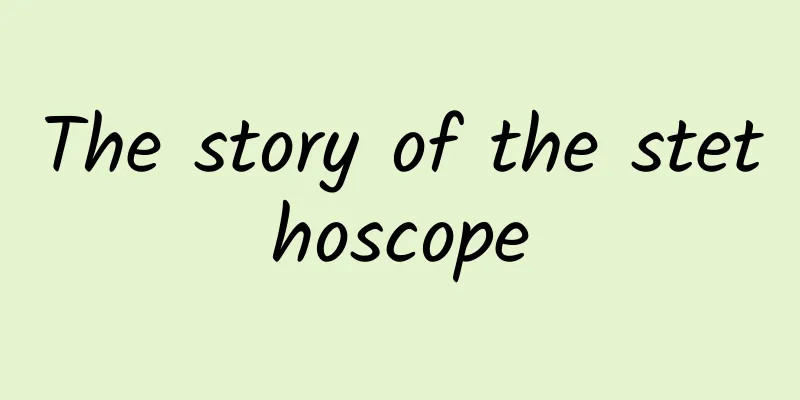The story of the stethoscope

|
After a day of scorching sun, the surface temperature outside the inpatient department has reached 40℃. The number of patients coming in and out who need intensive care is still increasing. Faced with the mountains of patients in the intensive care unit, everyone is already feeling irritable and uneasy. The high-speed turnover ward seemed to have undergone another wave of "reshuffle", with different faces lying on the beds and the handovers being carried out carefully and orderly. "Breaking news... Another new patient is being transferred in from the emergency department. He is currently receiving oxygen via nasal cannula at 10 L/min and has difficulty breathing. The indication for intubation needs to be re-evaluated..." Xiao Luo, the nurse on duty, shouted to everyone while answering the phone. The air seemed to freeze at this moment. This was the most embarrassing thing - a patient was coming during the shift change. "Everyone, hand over your shifts first, make quick decisions, and prepare to receive patients..." As the senior attending physician on duty today, I said immediately. With the sound of the transfer vehicle, the patient arrived and everyone immediately gathered around him, following the usual standard movements to cross the bed, give him oxygen, and complete the ECG monitoring connection. I walked to the bedside and saw a grandfather with white hair and a "medal" faintly visible under the skin of his chest. When I saw the ECG monitor, I instinctively thought that the thing should be a permanent heart pacemaker. In order to determine the patient's consciousness and symptoms, I patted the old man on the shoulder and asked, "Grandpa, do you know where this is?" The old man didn't answer, but his eyes kept moving, as if he wanted to express something, with a little northern accent, but I couldn't hear it clearly. I seemed to understand something instantly, so I leaned over and shouted into his ear: "Grandpa, do you know where this is? Did you hear it unclearly?" The old man shook his head and then nodded. At this moment, an experienced "old doctor" next to me raised the stethoscope receiver in her hand towards me. My first reaction was that she wanted to listen to my heart, so I quickly said, "Let me do it." But she put the receiver directly on her grandfather and said loudly into the receiver: "Grandpa, can you hear clearly like this?" The old man murmured in response: "I heard it clearly, I heard it clearly...", and slowly, his tense expression seemed to relax. After a series of consultations and targeted treatments, grandpa slowly fell asleep. The cause of the patient's acute respiratory distress has not yet been fully determined, and there is still a risk that the condition may worsen at any time. As usual, we immediately contacted the family to understand the elderly person's medical history and obtained a signed consent form. Through full communication with the family, we learned about Grandpa’s chronic disease history and the cause of this illness. We also learned that Grandpa had poor hearing, had been to various hospitals in the past few days, had not had a good rest, and his condition was getting worse. Fortunately, after our careful treatment and care, grandpa was finally discharged from the hospital two weeks later! During the follow-up visit, I saw that my grandfather had a pair of hearing aids on his ears, so I joked, "Grandpa, the sound is much clearer now, right?" Grandpa smiled and replied, "This thing is still not as clear as the one you gave me." My family and I burst into laughter after hearing this... postscript The invention of the stethoscope has a history of nearly 200 years. In addition to helping doctors complete important auscultation examinations, it can also serve as a bridge for communication with patients in some cases. From the French doctor Laennec who first proposed the concept of the stethoscope in order to diagnose and treat patients, to Academician Wu Mengchao who used his hands to warm up the stethoscope before listening to the patient's heart during winter rounds, to the discovery of new uses for the stethoscope in order to enable the patient to hear clearly... Different stories about stethoscopes have different protagonists and different scenes, but they are all accompanied by the love from the doctor, the love that gives hope to the patients. The first step between the patient and the doctor is communication and understanding, but the patient is always the one who needs help at any time and in any state. When anyone faces physical illness, either because of insufficient professional knowledge or because of the physical pain brought by the disease, whether it is soreness, numbness, pain, weakness, or any other strange feeling, it will cause them to have endless speculations about the abnormal behavior and the resulting anxiety and panic. When I first entered medical school, all I thought about was how to master various cutting-edge medical technologies and how to cure diseases. After working in the hospital for many years, especially after experiencing the COVID-19 epidemic, I deeply realized that no matter how sophisticated the doctor's skills are or how advanced the medical level is, the doctor's care and assistance will always be the most solid emotional fortress for the patient. Treatment must rely on science, but making patients feel comfortable requires the doctor's heart to help them. The moment the relationship between doctors and patients is established, it should not be oppositional, but symbiotic and empathetic. Empathy and the same spirit are the starting point of treating diseases and the end point of every qualified doctor's lifelong pursuit. As the name suggests, clinicians need to stand by the bed and observe the patient carefully. The purpose of observation is not only to correctly diagnose the condition, but more importantly to detect what kind of help the patient needs most. The old man in the story has been unable to hear the surrounding sounds clearly. At this time, the patient may feel fearful and irritable, and even the condition may worsen. A careful observation can solve the problem. A small stethoscope, and the "reverse thinking" it brings, demonstrates not only a clinical skill in collecting medical history, but also the doctor's patience in opening his heart and trying to listen to what the patient says, as well as the compassion in caring for the patient to the best of his ability. Therefore, the story of the stethoscope is not about the diagnosis of a disease, nor is it about the outcome of a case. The stethoscope does not connect symptoms and diagnosis, heartbeat and eardrum, but a wounded heart and caring hands. Tell me where you feel uncomfortable, I will find a way to hear you, and I will stay with you until the disease disappears. Tell me the pain and pass on hope to you. This is the true meaning of the stethoscope and the most correct way for doctors and patients to use it. Just like the classic description of the doctor's profession by American doctor Trudeau - sometimes to heal, often to help, always to comfort! Editor: Liu Yang and Zhao Na Proofreading: Li Na, Li Yule, Dong Zhe, Li Huiwen Producer: Wu Wenming [Copyright Statement] "Pumch Medical Journal" advocates respect and protection of intellectual property rights. Reprinting and quoting are welcome, but authorization from this platform is required. If you have any questions about the content and copyright of the article, please send an email to [email protected], and we will communicate with you in a timely manner. The content of this article is for communication and learning only, not for profit; popular science content is only used to popularize public health knowledge. Readers should not use it as a basis for individual diagnosis and treatment, and do not dispose of it on their own to avoid delaying treatment. For medical treatment, please visit the Peking Union Medical College Hospital APP online or offline. |
>>: Is it true that “sunbathing your eyelids” can cure myopia?
Recommend
What is the shiny thing in L'Occitane body lotion? Will there be any problem if pregnant women use L'Occitane body lotion once?
The main feature of L'Occitane body lotion is...
Will frequent urination stop after entering the pelvis?
There are many factors that lead to frequent urin...
Is sneezing caused by wind-cold or wind-heat? What should I do if my nose keeps sneezing?
Sneezing is a common phenomenon in our daily life...
How long does it take to detect pregnancy after artificial insemination?
As we all know, the pressure of work and life in ...
How to remove eyelash extensions by yourself
Eyelash extensions are quite common in life and a...
What to do if you have a sore mouth when you are two months pregnant
Women in the early stages of pregnancy often feel...
Preparation method of lactation-promoting Chinese medicine
Breast milk is very important for babies. It is f...
The correct steps to fill uneven forehead with hyaluronic acid
Hyaluronic acid is a common substance in cosmetic...
What to do for vaginal itching?
Sometimes women are embarrassed to go to the hosp...
What to do if the vulva is itchy and has an odor?
Vulvar itching and odor is a very common gynecolo...
Is lumbar degenerative osteoarthritis mainly related to age? What are the symptoms?
Author: Zhu Yuqi, Chief Physician, Eye Hospital, ...
GSMA: North American Mobile Economy Report 2022
GSMA has released the "2022 North American M...
Is eating a big banquet in the countryside a bad habit or a custom? What is the difference between a bad habit and a custom?
In general, a banquet in the countryside is calle...
When does bleeding occur in ectopic pregnancy?
The so-called ectopic pregnancy is an abnormal pr...









